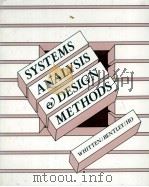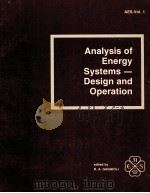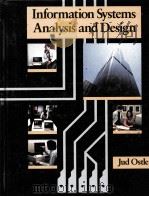《ANALYSIS AND DESIGN OF ENGINEERING SYSTEMS》
| 作者 | HENRY M.PAYNTER 编者 |
|---|---|
| 出版 | THE M.I.T.PRESS |
| 参考页数 | 303 |
| 出版时间 | 没有确切时间的资料 目录预览 |
| ISBN号 | 无 — 求助条款 |
| PDF编号 | 812060298(仅供预览,未存储实际文件) |
| 求助格式 | 扫描PDF(若分多册发行,每次仅能受理1册) |

Part Ⅰ.Introductory Remarks1
A.Engineering Systems1
B.Engineering and Pure Science2
C.Specific Examples of Engineering Systems3
D.Systems and Abstractions10
Part Ⅱ.The System Concept:Identity,Structure,and Properties11
A.Description of a System11
B.Reticulation13
Part Ⅲ.Variables and Parameters of Energetic Systems17
A.Introduction and Historical Background17
B.Description of Energy Transactions17
Part Ⅳ.The Continuity of Energy26
A.Introduction and Historical Background26
B.Properties of the Field29
C.Generalized Continuity Equation30
D.Continuity of Energy and the Generalized Poynting Vector31
E.Continuity of Entropy32
Part Ⅴ.Energy Ports and Power Bonds35
A.Introduction35
B.Application of the Divergence Theorem36
C.Reticulation of the Energy Influx36
D.Reticulation of Energy Storage37
E.Reticulation of Energy Dissipation38
F.The Reticulated Equation of Energy Continuity39
G.Power Bonds42
Part Ⅵ.Multiported Systems and Elements49
A.Introduction49
B.Multiports50
C.Ideal Energy Junctions51
Part Ⅶ.Classes and Relations58
A.Relations and Structure58
B.The Concept of a Class59
C.The Concept of a Relation64
Part Ⅷ.Continuum Logic and Hyperpolyhedral Functions77
A.Introduction77
B.Classes77
C.Order81
D.Continuum Logic84
E.Two-Valued or Binary Logic87
F.Multivalued Logic(Post Logics)91
G.Hyperpolyhedral Functions92
Part Ⅸ.The Steady-State of Energetic Systems100
A.Introduction100
B.The Static Case100
C.The Stationary Case101
D.Determination of the Steady-State102
E.System Reticulation for Steady-State Behavior103
F.Nonlinearity105
Part Ⅹ.Functional Transformations and Computing Functionals108
A.Introduction108
B.Computing Functionals108
Part Ⅺ.Diagrams and the Coding of System Structure113
A.Signs113
B.Communication of a Computing Structure114
C.Combinatorial Topology-Incidence Matrix117
D.Coded Representation of Graphs and Digraphs123
E.Coding the Energetic Structure of Multiport Systems125
Part Ⅻ.State-Determined Systems130
A.Introduction130
B.Elements of a State-Determined System132
C.The Mathematical Construct of a State-Determined System133
D.The Variables of State in Generalized Dynamics135
E.The Tetrahedron of State136
F.The Characteristic Static Relations137
G.The Three State-Determined Elements(R,C,I)143
H.The Concept of Circuits and Networks148
Part Ⅷ.Distribution of Energy Over Space,Time,and Frequency153
A.Introduction153
B.Energy Principles for State-Determined Systems154
C.Fields,Potentials,and Transmittances159
D.Field Form Factors178
E.Rectangle Diagrams186
F.The Temporal Response of Physical Systems193
G.System Response in the Time and Frequency Domains198
H.Linear System Response in Terms of Potential Functions211
I.One-Port Elements and the Impedance Concept214
J.The Flow of Power and Energy in Systems219
Part ⅩⅣ.Two-Port Elements and Energy Transport Processes223
A.Generalized Two-Port Elements223
B.Primitive Energy Transport Processes225
C.Linear Two-Port Elements227
D.Some Standard Forms of Two-Port Nets233
E.Description of Linear Two-Ports235
Part ⅩⅤ.Transformers and Transducers240
A.The Concept of Ideal Two-Port Elements240
B.Energy Transformation Elements241
C.Eaergy Trausduction Elements250
Part ⅩⅥ.Energy Transmission Elements256
A.The Two-Port Element:·TM·256
B.The Canonical Transmitter Matrix259
C.Generalized Transmitters and Wavelike Transmitters263
D.Ideal Wavelike Transmitters267
E.Modeling Diffusive Transmission277
F.The Dynamics of Monotone Processes280
Part ⅩⅦ.Energy Modulation and Amplification287
A.General Three-Port Elements287
B.Generalized Power Modulators as Three-Port Elements288
C.Generalized Amplifiers290
D.The Trinode as a Three-Port Element293
E.Cascading and Feedback of Amplifiers299
《ANALYSIS AND DESIGN OF ENGINEERING SYSTEMS》由于是年代较久的资料都绝版了,几乎不可能购买到实物。如果大家为了学习确实需要,可向博主求助其电子版PDF文件(由HENRY M.PAYNTER THE M.I.T.PRESS 出版的版本) 。对合法合规的求助,我会当即受理并将下载地址发送给你。
高度相关资料
-

- Systems engineering : architecture and design
- 1990 McGraw-Hill
-

- Systems analysis and design
- 1985 R.D. Irwin
-
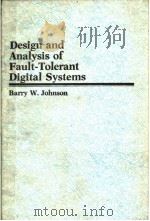
- DESIGN AND ANALYSIS OF FAULT-TOLERANT DIGITAL SYSTEMS
- 1989 ADDISON-WESLEY PUBLISHING COMPANY
-

- ANALYSIS AND DESIGN OF INFORMATION SYSTEMS SECOND EDITION
- 1989 MCGRAW-HILL PUBLISHING COMPANY
-
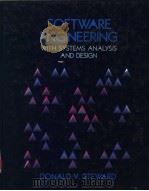
- Software Engineering with Systems Analysis and Design
- 1987 Cole Publishing Company
-

- Analysis and design of dynamic systems Third Edition
- 1997 Addison-Wesley
-

- SYSTEMS ANALYSIS AND DESIGN
- 1984 PRENTICE-HALL OF AUSTRALIA PTY LTD
-

- BUILDING ENGINEERING AND SYSTEMS DESIGN
- 1979 COPYRIGHT
-

- BUSINESS SYSTEMS ANALYSIS AND DESIGN
- 1994 COURSE TECHNOLOGY
-

- ANALYSIS AND DESIGN OF BUSINESS INFORMATION SYSTEMS
- 1991 MACMILLAN PUBLISHING COMPANY
提示:百度云已更名为百度网盘(百度盘),天翼云盘、微盘下载地址……暂未提供。➥ PDF文字可复制化或转WORD
